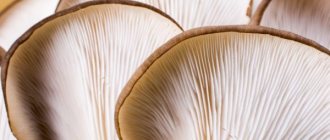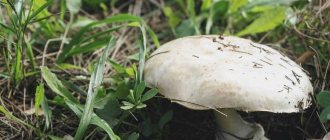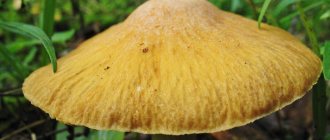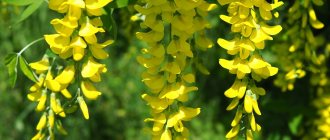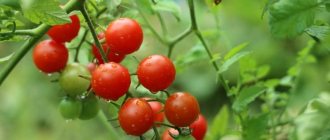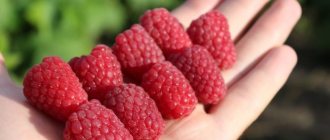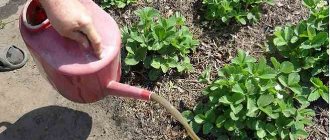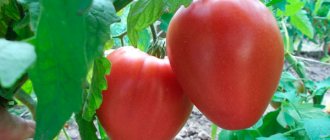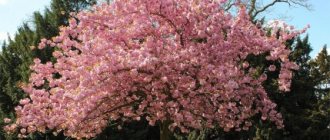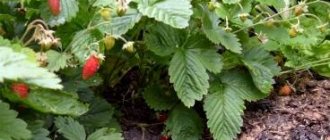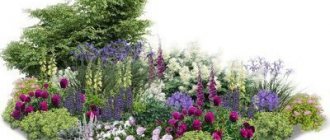People who believe that fly agarics can be exclusively poisonous are mistaken. There are several types of edible fly agaric mushrooms, which after careful pre-treatment can be eaten. The taste qualities of these forest gifts are controversial, so edible fly agaric mushrooms are classified as conditionally edible mushrooms.
We bring to your attention photos of edible fly agarics: gray-pink (blushing, pink), orange, saffron and ovoid, a description of these mushrooms and information about their use as food.
General information about the mushroom
— Advertising —
Amanita mushrooms belong to the genus of lamellar mushrooms of the amanita family (Amanitaceae). The Slavic name of the mushroom “fly agaric” is associated with the massive use of red fly agaric in sanitation as an insecticide against flies. Initially, only the red fly agaric had this name, but later it spread to the entire genus of mushrooms. The Latin name of the genus "Amanita" comes from the name of Mount Amanon, where many edible mushrooms grew.
Characteristics of the edible fly agaric
hat
The cap is fleshy, sometimes with a tubercle, and is easily separated from the stem. The color of the cap is white, red or green; on top it is covered with shreds and flakes from the general cover. The edge is smooth or ribbed.
Pulp
— Advertising —
The pulp is white; when cut, it changes color in some species, and the smell is expressed differently.
Leg
The leg is cylindrical, straight, widening towards the base.
Mushroom use, benefits and contraindications
If such mushrooms are used correctly, they bring not only harm to humans, but also certain benefits. They can act as insecticides and relieve people from a number of ailments.
The products can be used externally and internally. They are recommended in exact dosage :
- for skin diseases (eczema, diathesis, neurodermatitis);
- during the occurrence of muscle and joint pain caused by rheumatism, radiculitis;
- for eye diseases;
- for problems of the genital organs in men;
- patients with diabetes mellitus;
- people with tuberculosis;
- for oncology problems;
- for people with epilepsy.
The most common - red fly agarics - are used in a dried state, in the form of ointments, juices, extracts, and alcohol tinctures. All products are used externally for the healing of bruises, burns, wounds that do not heal for a long time, varicose veins, and the treatment of inflamed joints.
A good healing effect can be obtained if you mash a mushroom cap right in the forest, knead it and tie it to the affected area. The wound will heal quickly. To prepare tinctures, only mushroom caps are taken. They are crushed and placed in the refrigerator for 3 days. Then they are placed in a jar and filled with vodka or alcohol 1 cm above the level of the mushrooms. The jar with the mixture is placed in a dark place for 15 days, after which the mixture is filtered.
The ointment is prepared from fresh fly agarics. First, they are washed, ground into a paste, and mixed with sour cream. You can also dry the caps, grind them and add vegetable oil and Vaseline to the resulting powder.
Safety precautions, restrictions on use
Fly agaric also has contraindications. When using preparations based on these mushrooms, you should remember:
- For people with diseases of the digestive system, the use of fly agarics is contraindicated;
- such drugs in any form are not given to pregnant and lactating women, people with mental disorders;
- Do not use metal utensils for preparing ointments and tinctures;
- These substances must be taken with strict adherence to the recipe and the exact dosage of its components;
- It is recommended to use rubber gloves when preparing tinctures and ointments;
- children, except in rare cases, are not given medicines based on fly agarics;
- After using such products, you should wash your hands well with soap.
Internal administration of fly agaric solutions is possible only after medical consultation, under the supervision of a specialist. We must not forget that it is enough to eat only 4 caps of this mushroom and get poisoning, accompanied by convulsions, delirium, and suffocation. If you experience signs of poisoning with fly agaric mushrooms or suspect such a fact, you should immediately seek medical help.
Other uses
These organisms, donated by nature, have found application not only in folk medicine.
They were popular in other areas too:
- Previously, this class of fungi was used as an insecticide. Its caps were placed on window sills and furniture, sugar syrup was applied to them in order to attract flies, mosquitoes, and other insects in this way, which is why the mushroom was called fly agaric.
- In Ancient Egypt, fly agaric ointment was used to combat wrinkles.
- Since ancient times, priests began to use these mushrooms, despite their poisonous properties, during their ritual procedures and cult rites. Tinctures prepared from such products allowed shamans to enter a trance and talk with the deceased.
- Powder made from fungal spores is used in the production of fertilizers.
Where do edible fly agarics grow?
— Advertising —
Edible fly agarics grow in light deciduous and mixed forests, on any soil, in the temperate climate zones of the Northern Hemisphere everywhere, except in the western regions of North America. At the end of the 20th century, the mushroom, along with seedlings from Europe, was brought to South Africa.
Edibility of fly agaric
Edible fly agarics are used fresh after boiling, they are also pickled, salted, and dried. Young mushrooms with unopened caps are grilled.
The most popular of the edible fly agaric mushrooms since ancient times is the Caesar fly agaric, which is used fresh for food, as well as fried, boiled, dried and frozen, salted, pickled and canned, and an extract and dry powder are made from it.
Types of edible fly agaric
Gray-pink fly agaric (Amanita rubescens)
Also known as pink fly agaric, blushing fly agaric or pearl fly agaric.
The diameter of the cap is 6-20 cm. Its shape in young mushrooms is hemispherical or ovoid, later convex and flat-spread, without a tubercle. The color of the cap is grayish-pink or red-brown, the surface is shiny, slightly sticky. The pulp is white, fleshy, the taste is weak, the smell is not pronounced. When cut, it immediately turns light pink, and then gradually turns wine pink. The stem is 3-10 cm in height, 1.5-3 cm in thickness, cylindrical in shape, solid in young mushrooms and hollow in mature ones. Painted white or pinkish, the surface is lumpy. There is a tuberous thickening at the base.
Grows in small groups or singly next to deciduous and coniferous trees, on any soil, in the temperate climate of the Northern Hemisphere. The season lasts from spring to late autumn, bearing fruit en masse in July-October.
Conditionally edible mushroom. It is not consumed fresh; it is used fried after boiling.
Caesar's mushroom (Amanita caesarea)
The cap is 8-20 cm in diameter, ovoid or hemispherical in shape, in mature mushrooms it is convex to flat, the edge is furrowed. The color of the cap is golden-orange or bright red, the surface is dry. The pulp is fleshy, light yellow in color, the stem is white, the smell and taste are not pronounced. The stem is 8-12 cm long, 2-3 cm thick, the base is tuberous, the color is yellow-orange, the surface is smooth. There is a ring.
Grows next to beech, oak, chestnut, in deciduous, less often in coniferous forests, on sandy soils. It lives in warm areas of northern latitudes, sometimes in the subtropics. The fruiting season continues in summer and autumn.
An edible, delicious mushroom that is baked on a grill, fried, dried, or used fresh.
Fly agaric (Amanita ovoidea)
The cap is 6-20 cm in diameter, fleshy, ovoid, semi-round in shape, later convex-spread, with a smooth edge. The skin is white or off-white, the surface is shiny, dry, young mushrooms have white flakes. The pulp is white, dense, does not change color when cut, the smell and taste are weakly expressed. The leg is solid, dense, 10-15 cm high, 3-5 cm thick, widening towards the base. The surface is white, with a flaky powdery coating.
Grows in deciduous and coniferous forests of Europe, the Mediterranean, the British Isles, Western Siberia, and Japan. Fruiting begins in August and ends in October.
Edible mushroom.
How to distinguish the stinking fly agaric from similar mushrooms?
Similar inedible species and how to distinguish them from them?
- The spring fly agaric (lat. Amanita verna) has a flatter cap and grows in regions with warmer climates.
- The pale grebe (lat. Amanita phalloides) is similar to the white grebe in almost all external features. The only exception is the hat. In the pale grebe it is slightly greenish.
- Amanita ovoidea (lat. Amanita ovoidea). Its distinctive features are a larger volva than that of the stinking fly agaric, as well as a small cream-colored ring on the stem.
Similar edible species and how to distinguish them from them?
- The white float (lat. Amanita alba) looks very similar to the stinking fly agaric, but has a ribbed edge of the cap and is practically odorless.
- Volvariella mucocephala (lat. Volvariella gloiocephala) has pinkish-colored plates and is odorless.
- Champignon (lat. Agaricus) differs from white toadstool by brownish plates and a yellowish ring. If you touch a champignon cap, it will turn yellow.
- The white umbrella mushroom (lat. Macrolepiota excoriata) has a harder fibrous stem and does not have an unpleasant odor.
Advice! Do not cut the mushroom right down to the cap, so that the signs characteristic of the stinking fly agaric do not disappear.
Poisonous and inedible species of edible fly agaric
Red fly agaric (Amanita muscaria)
The cap is 8-20 cm in diameter. The shape of young mushrooms is hemispherical, later it opens and becomes flattened or dented. The color is bright red, the surface is shiny with white flakes. The pulp is white, light orange or light yellow under the skin, the smell is light. The stem is cylindrical, 8-20 cm tall, 1-2.5 cm thick, white or yellowish in color, tuberous-thickened at the base, hollow in old mushrooms.
Mycorrhiza forms with birch and spruce. Grows in acidic soils and temperate forests in the northern hemisphere. The harvest season lasts from August to October.
Poisonous mushroom.
Panther fly agaric (Amanita pantherina)
The cap is 4-12 cm in diameter, dense, hemispherical in shape, later convex or spread, the edge is thin, ribbed, with flakes. The skin is brownish, the surface is smooth, shiny, with small white flakes that are easily separated. The pulp is white, does not change in air, watery, fragile, unpleasant smell, sweetish taste. The leg is 4-12 cm high, 1-1.5 cm in diameter, white, cylindrical, narrows at the top, widens at the bottom, hollow, with a ring. The surface is fleecy.
It grows in coniferous, mixed and deciduous forests of the temperate climate of the Northern Hemisphere, under pines, oaks, beeches, and on alkaline soils. The season lasts from mid-July to the end of September.
Poisonous mushroom.
Tall fly agaric (Amanita excelsa)
The cap is 6-10 cm in diameter, hemispherical in shape, later opens to convex and flat, the structure is fibrous, the edge is smooth. The surface becomes slimy in wet weather, it is usually silky-fibrous, grayish or brownish in color, darker in the center. The leg is 5-12 cm high, 1.5-2 cm thick, cylindrical in shape, thickens towards the base, solid or hollow, with a ring. The pulp is white, young mushrooms have a faint anise smell, and mature mushrooms have a thin odor.
Grows next to coniferous trees (fir, spruce, pine), or broad-leaved trees (beech, oak).
Poisonous mushroom.
Toxic properties of red fly agaric
Few mushrooms can surpass the fly agaric in toxicity; species belonging to the class of Agaricomycetes are almost always characterized by increased toxicity. The largest amount of toxic substances is contained in the cap and base of the mushroom stem. This type of mushroom contains the following toxic substances:
- ibotenic acid; - muscarine; - muscimol.
Muscarine, which is present in large quantities in the red cap, has a pronounced intoxicating effect on the human body. Poisoning with this substance is indicated by vomiting, increased salivation, decreased blood pressure and increased sweating. Muscarine reduces cardiac output. In severe cases, a person may experience an attack of suffocation due to bronchospasm and pulmonary edema. Convulsions, disturbances of consciousness and death are possible.
The largest amount of toxic substances is contained in the cap and base of the mushroom stem.
Ibotenic acid has a negative effect on the condition of brain cells. In addition, this substance, along with muscimol, has a psychotropic effect. Cases of fatal poisoning are extremely rare. One fruit that accidentally ends up in a mushroom picker’s basket contains too few toxic substances for them to cause death. It is believed that a lethal dose of poisons is contained in 12-15 caps.
Use as an insecticide
Fly agarics can be used to prepare an insecticide. In fact, the poisons contained in this mushroom do not lead to the death of insects. Flies that drink fly agaric infusion fall asleep and then drown. Thus, if you take out a sleeping insect and place it on a dry surface, after 10-12 hours it will come to life and fly away.
Infusion of fly agaric.
To prepare the insecticide, you need to finely chop the fruit, place it in a plate and cover with cold water. The composition will infuse for 24 hours and will begin to attract flies. It will emit a pleasant smell for insects. The finished product can be used for a long time. You can periodically add water to the composition.
If an old fly agaric with a concave cap was found in the forest, you can shake out the spore powder from it and pour water onto the cap, into which alkaloids will quickly be released from the pulp. Flies will quickly drown in the liquid located in the center of the concave cap.
Growing edible fly agaric at home
To grow edible fly agarics, take several dried or fresh caps that are ready for sporulation, carefully cut them and mix them with the soil surface under a symbiotic tree (pine, spruce).
Mushrooms are sown in early spring or autumn. In dry weather, moisten the soil on the site well and regularly.
Signs of poisoning and first aid
The bright and attractive white fly agaric contains a dangerous poison called muscarine. If you eat 6 of these mushrooms, you will die. Even doctors can't help.
The gastrointestinal tract and liver are immediately affected. If, a couple of hours after eating mushrooms, vomiting, diarrhea, severe unbearable thirst, cramps or colic in the abdomen, as well as muscle pain occur, it means that mushroom poisoning has occurred.
At the same time, the pulse and pressure will decrease, loss of consciousness is possible, blood clotting decreases, the nervous system is affected, and hallucinations appear. First of all, you should call an ambulance, then do the following:
- rinse the victim’s stomach by inducing vomiting and then drinking a large volume of liquid;
- give him a pack of activated carbon (10 tablets) to drink;
- Potassium permanganate diluted with water will work well.
During this period, everything depends on the speed of medical care, and therefore, without waiting for an ambulance, you can independently deliver the victim to the nearest hospital department.
Interesting facts about the mushroom
- The gray-pink fly agaric grows even in Africa, in Congo, Zambia, and Zimbabwe.
- Caesar's fly agarics actively accumulate heavy metals: arsenic, cadmium, lead, mercury and selenium.
- The antibacterial activity against Staphylococcus aureus and Bacillus subtilis and the antitumor effect of fly agarics are known. An alcohol extract from fly agaric stops the growth of sarcoma.
Psychotropic properties
Some traditional healers prepare tinctures and decoctions from poisonous mushrooms, intended to cure extremely dangerous diseases. In addition, some substances present in the fruits of this type of fly agaric have a pronounced psychotropic effect.
The compounds present in this fruiting body can cause alternating euphoria and anger. There is a feeling of extreme intoxication. Additionally, the hallucinogenic substances present in these fly agaric mushrooms cause double vision as well as auditory and visual hallucinations.
A psychotropic effect is observed when consuming the decoction.
In most cases, when consuming these mushrooms, colored visions occur. Subsequently, loss of consciousness occurs. After waking up, a person does not remember anything. A pronounced psychotropic effect is observed when consuming a decoction of these mushrooms; the properties are preserved in the dried caps. The action of the fly agaric lasts for 2 hours.
It is not recommended to consume these mushrooms, because... To achieve a psychotropic effect, you need to eat a lot of fruiting bodies. This increases the risk of fatal poisoning. A person’s death can occur as a result of a stroke caused by the rupture of a dilated vessel in the brain, or a disruption of the cardiovascular system.
